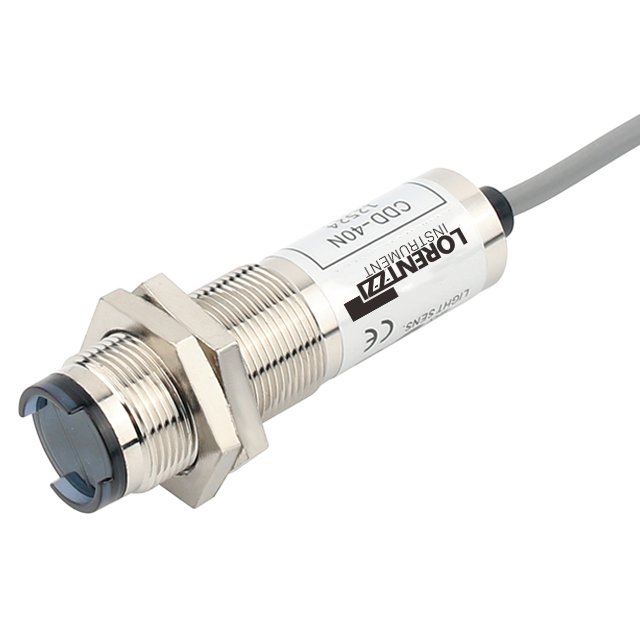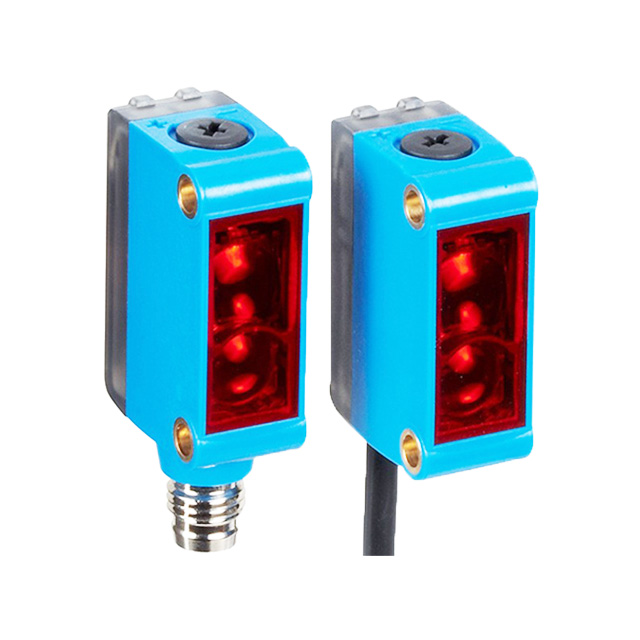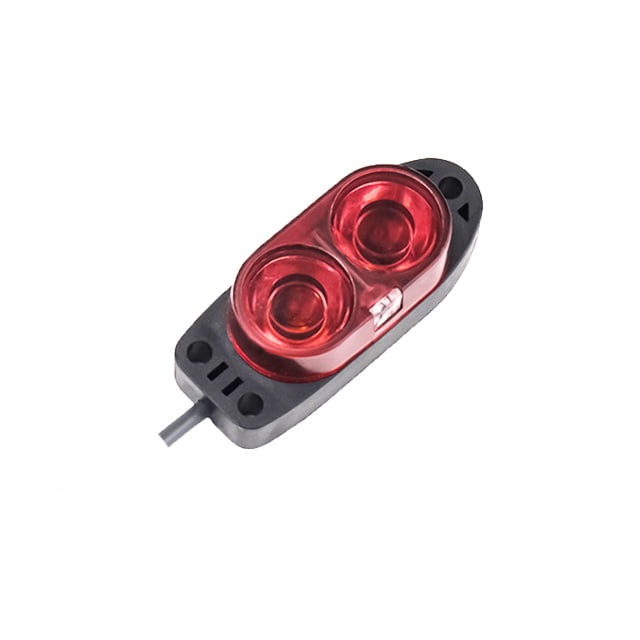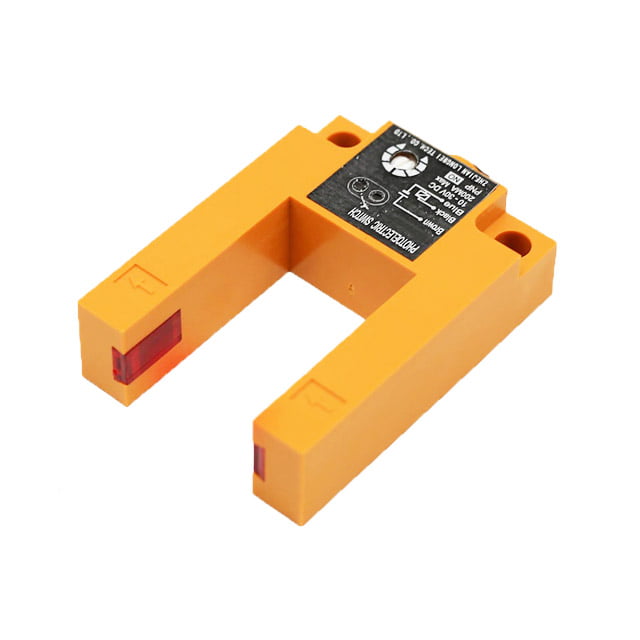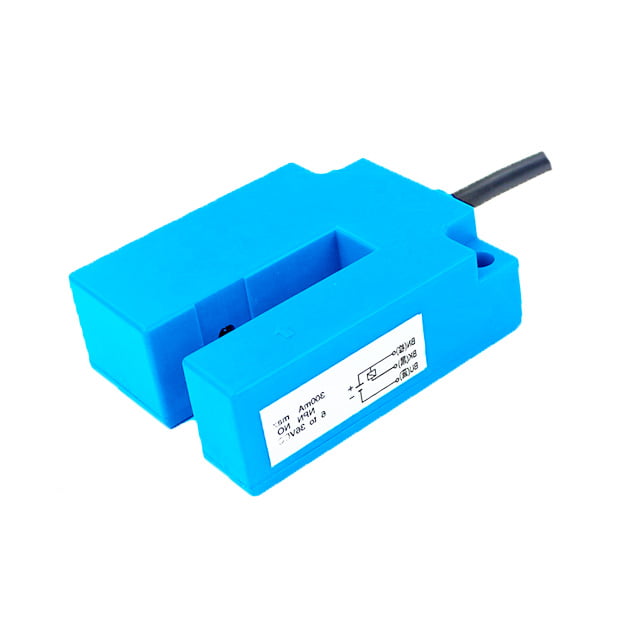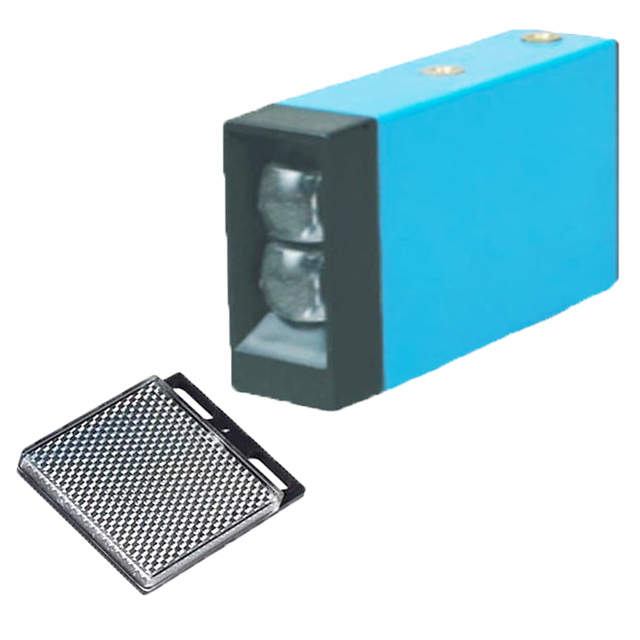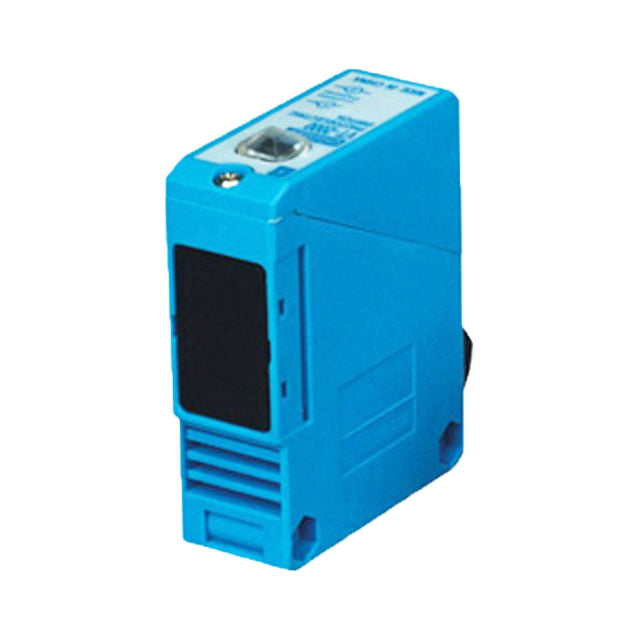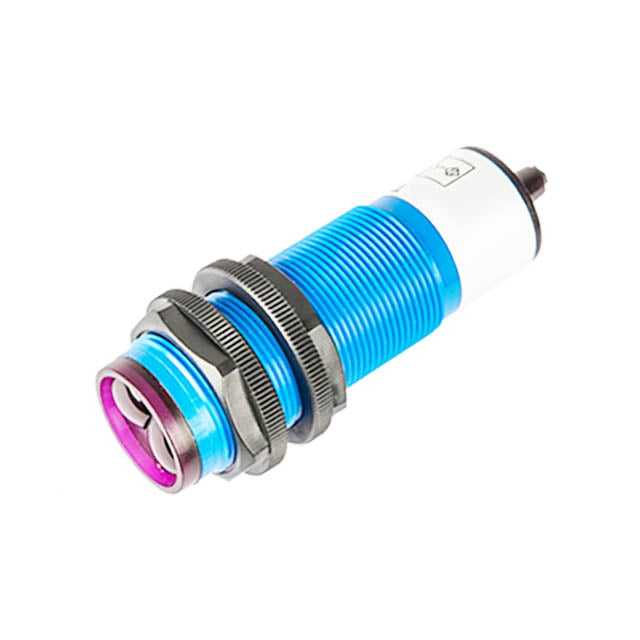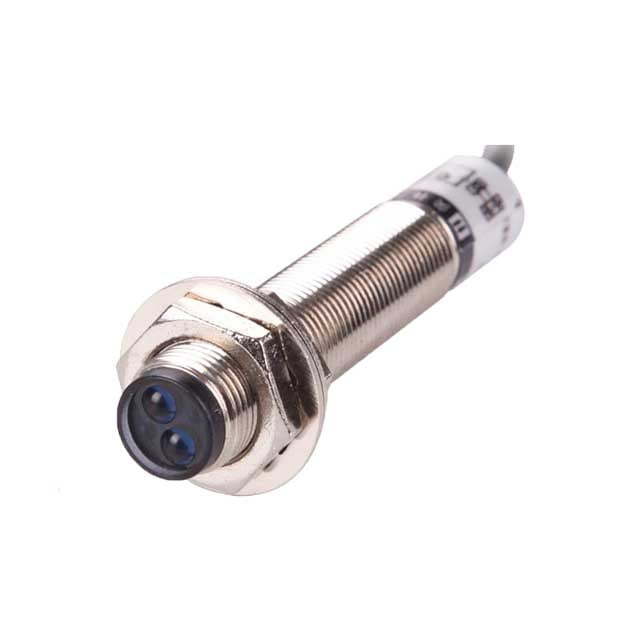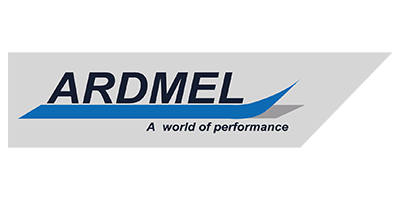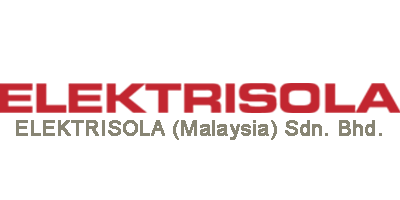مستشعر كهروضوئي
- تتوفر أنواع عاكسة منتشرة وعاكسة عكسية وعابرة للحزمة
- مستوى حماية IP67، مقاوم للماء والزيت
- أكثر من 10 سنوات من الخبرة في التصنيع
- ضمان ممتد لمدة عامين
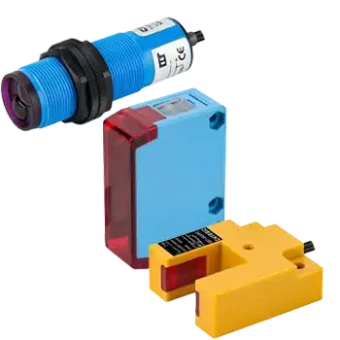
منتجاتنا
أنواع لورنتزي® تشمل الحساسات الكهروضوئية الحساسات الكهروضوئية المنتشرة والعاكسة العاكسة والعاكسة العكسية والعاكسة من خلال الشعاع والحساسات الكهروضوئية ذات العلامات الملونة. ووفقًا لتصنيف الشكل، هناك خيارات أسطوانية ومستطيلة وشوكية الشكل وخيارات أخرى. في ظل النمو السريع مورد أجهزة الاستشعار الكهروضوئي في الصين, لورنتزي® يمكن أن توفر خدمات الشراء المتكاملة لجميع احتياجاتك من المستشعرات الكهروضوئية!
-
مستشعر كهروضوئي منتشر ذو غلاف معدني منتشر، أقصى مسافة كشف 40 سم، ...
-
-
-
مستشعر كهروضوئي من النوع ذي الفتحة، جهد تشغيل واسع: DC10-30V أو AC90-250V، NPN، ...
-
تصميم على شكل حرف U يوفر المساحة، نطاق الكشف عن السماكة القصوى...
-
تتوفر مخرجات NPN وPNP من النوع U، مبيت مدمج، مبيت مدمج...
-
1.G65 مفتاح استشعار القرب المحزوز G65، 2.2.يتوفر مخرجات مختلفة، 3.IP54 حماية...
-
قطر M12، موفرة للمساحة، مسافة استشعار قصوى 3 أمتار، حتى...
-
-
الحد الأقصى للكشف 5 أمتار أو أكثر، يمكن أن يكون الإخراج PNP، ...
-
متوفر في أجهزة استشعار منتشرة وعاكسة عاكسة ومنتشرة ومن خلال الشعاع، ومخرج مرحل 3 أمبير، ...
-
-
-
-
حجم سن اللولب للمنتج 18 مم، يتوفر الإخراج في NPN، PNP، ...
لا يمكنك العثور على المنتج الذي تحتاجه؟ انقر على الزر للاتصال بنا!
لماذا تختار لورنتزي لتكون مورداً لك؟
المورد الصيني
يقع مصنعنا في مركز الأجهزة الكهربائية ذات الجهد المنخفض في الصين. تقدم منتجاتنا جودة عالية وأسعار تنافسية.
مجموعة واسعة من المنتجات
يمكن لشركة Lorentzzi توريد مجموعة كاملة من الحساسات الكهروضوئية ذات الجودة الممتازة، وتتوفر المخرجات في مخرجات PNP أو NPN أو NO أو NC أو NO+NC.
متوفر في المخزون
نحتفظ دائمًا بمخزون أجهزة الاستشعار الكهروضوئية بمستوى معقول لتلبية طلبات العملاء العاجلة. نعتقد أن مساعدة العملاء على توفير الوقت يساعدهم أيضًا على توفير المال.
الأسئلة المتداولة
ما هي المستشعرات الكهروضوئية؟
على عكس الحساسات الحثية، التي تستخدم المجالات المغناطيسية، والحساسات السعوية، التي تستخدم المجالات الكهربائية، فإن الحساسات الكهروضوئية هي نوع آخر من حساسات القرب التي تستخدم الضوء للكشف عن وجود الأجسام أو غيابها.
تعمل المستشعرات الكهروضوئية على تنشيط خرجها عندما يتم حجب شعاع الضوء أو انخفاض شدة الضوء.
ما هو مبدأ عمل المستشعر الكهروضوئي؟
يحتوي المستشعر الكهروضوئي على مكونين رئيسيين، أحدهما باعث للضوء، والآخر مستقبل للضوء.
يمكن أن يولد الباعث ضوءًا منه إلى جهاز الاستقبال، وعندما يحجب جسم ما شعاع الضوء أو يعكسه، يكتشف جهاز الاستقبال التغير في شدة الضوء، مما يؤدي إلى تنشيط المستشعر لإخراج (على سبيل المثال، إشارة تشغيل/إيقاف).
كم عدد أنواع المستشعرات الكهروضوئية؟
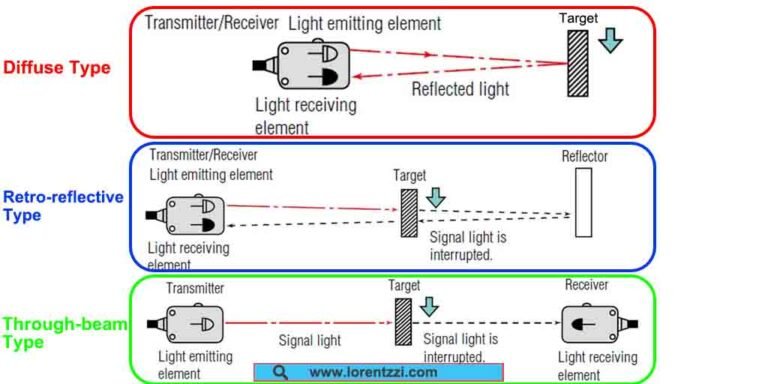
توجد ثلاثة أنواع من الحساسات الكهروضوئية، وهي الحساسات الكهروضوئية المنتشرة والعاكسة الرجعية والحساسات الكهروضوئية العابرة للحزمة.
تكتشف المستشعرات المنتشرة الأجسام من خلال الاعتماد على الانعكاس المنتشر، حيث ينعكس الضوء عن الجسم نفسه.
من ناحية أخرى، تستخدم المستشعرات العاكسة العاكسة العكسية عاكسًا عاكسًا عكسيًا لارتداد الضوء إلى جهاز الاستقبال. ونظرًا لأن العاكس مصمم لإعادة الضوء بكفاءة إلى مصدره، فإن الحساسات العاكسة العاكسة العكسية عادةً ما يكون لها نطاق كشف أطول بكثير من الحساسات المنتشرة.
بينما يتم الفصل بين الباعث والمستقبل لمستشعر الحزمة العابرة، ويجب تركيب الباعث والمستقبل بشكل متقابل، بحيث يكون للباعث والمستقبل في الحزمة العابرة أطول مسافة كشف.
للمعرفة، يمكنك إلقاء نظرة على مقالنا: كشف النقاب عن أنواع المستشعرات الكهروضوئية: دليلك النهائي!
تطبيقات المستشعرات الكهروضوئية
يمكن العثور على المستشعرات الكهروضوئية في العديد من التطبيقات، وقد قدمنا التطبيقات النموذجية. يمكنك قراءة هذه المقالة: تطبيقات المستشعرات الكهروضوئية: 5 أمثلة نموذجية.
هل تتضمن الحساسات الكهروضوئية ستائر ضوئية آمنة؟
إن ستائر الإضاءة الآمنة ينتمي إلى المستشعر الكهروضوئي، فهو أشبه بمستشعر عابر للحزم الضوئية، وببساطة، فهو يجمع بين العديد من المستشعرات الكهروضوئية في منتج واحد في اتصال متوازي، وبمجرد حجب شعاع ضوئي واحد منها، سيقوم بتنشيط خرجها ثم يوقف الآلة.
ما الفرق بين الحساسات الكهروضوئية والحساسات السعوية؟
يمكن استخدام كل من مستشعري القرب للكشف عن الأجسام المعدنية وغير المعدنية، ولكن الفرق الرئيسي هو مبدأ عملهما ومسافة الكشف.
تستخدم المستشعرات الكهروضوئية الضوء للكشف بينما تستخدم المستشعرات السعوية المجالات الكهربائية للكشف. ومسافة الكشف في المستشعر الكهروضوئي أطول بكثير من مستشعر القرب السعوي.
هل يمكنني استخدام مستشعر كهروضوئي للكشف عن المواد الشفافة مثل الزجاج؟
نعم، يمكننا استخدام الحساسات الكهروضوئية للكشف عن الزجاج الشفاف أو الزجاجات الشفافة، ولكن من الأفضل استخدام النوع المنتشر أو العاكس الرجعي. لأن كلا النوعين يستخدمان التغير في شدة الضوء لاكتشاف ما إذا كان الجسم ضمن نطاق الاستشعار.
ما هي الاختلافات بين مستشعر القرب والمستشعر الكهروضوئي؟
هناك 4 اختلافات بين المستشعرات الكهروضوئية ومستشعرات القرب:
- مبادئ العمل المختلفة: تستخدم المستشعرات الكهروضوئية ضوء الأشعة تحت الحمراء كمصدر للضوء للكشف عن وجود جسم ما، بينما تستخدم مستشعرات القرب التغيرات في التيار الدوامي (المستشعرات الحثية) أو السعة (المستشعرات السعوية) للكشف عن الأجسام.
- مسافات استشعار مختلفة: تتمتع المستشعرات الكهروضوئية بمسافة كشف أطول من مستشعرات القرب، ويمكن للمستشعرات الكهروضوئية استشعار أي أجسام صلبة أو سائلة أو شفافة، بينما يمكن لمستشعرات القرب الاستقرائي استشعار الأجسام المعدنية فقط.
- بيئات العمل المختلفة: لا يمكن أن تعمل المستشعرات الكهروضوئية إلا في بيئة نظيفة وخالية من الغبار والزيوت، بينما يمكن أن تعمل مستشعرات القرب في البيئات القاسية، بغض النظر عن الغبار أو الزيت.
- أسعار مختلفة: دائمًا ما تكون المستشعرات الكهروضوئية أغلى من مستشعرات القرب.
ما هو رمز المفتاح الكهروضوئي؟
يرجى الاطلاع على رمز المستشعر الكهروضوئي على الرابط المقدم من شركة Siemens: https://symbols.radicasoftware.com/category/photoelectric-sensors.

